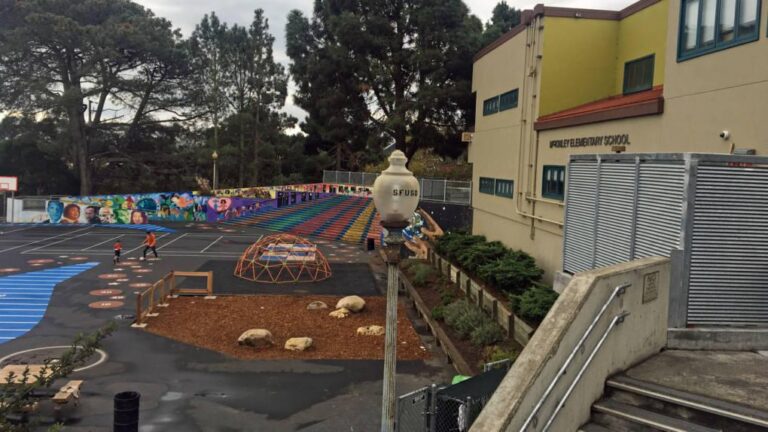Decoding San Francisco’s Public School Lottery: Equity, Challenges, and Paths Forward
How San Francisco’s School Lottery System Functions
San Francisco’s public school enrollment hinges on a sophisticated lottery system designed to allocate thousands of student placements annually. This computerized process integrates a randomized selection with a structured priority framework to balance fairness and address equity concerns. Families submit ranked preferences for public schools citywide, and the algorithm factors in elements such as proximity to schools, sibling enrollment, and eligibility for specialized programs like language immersion or special education.
While randomness is central to ensuring impartiality, the system also prioritizes students from historically underserved neighborhoods and those with specific educational needs. This hybrid approach aims to democratize access, yet the actual outcomes often reflect the complexities of balancing demand, capacity, and fairness.
| Priority Category | Explanation | Illustration |
|---|---|---|
| Local Residency | Preference for students living near the school | Applicant resides within a 1-mile radius |
| Sibling Enrollment | Allows families to keep siblings together | Older sibling currently attending the school |
| Specialized Programs | Priority for applicants to unique curricula | Application to a dual-language immersion track |
| Random Draw | Final allocation of remaining seats | All other eligible applicants |
Obstacles and Critiques of the Current Lottery Framework
Despite its intention to foster equitable access, the San Francisco school lottery faces significant criticism regarding its effectiveness in leveling the playing field. Many argue that the system’s reliance on chance does not sufficiently address entrenched disparities tied to socioeconomic status and race. Families from lower-income backgrounds often find themselves at a disadvantage due to limited resources, lack of access to technology, or insufficient guidance navigating the application process.
Moreover, the lottery’s opaque algorithm and limited transparency have eroded trust among parents, who frequently express frustration over unpredictable outcomes and minimal recourse. The system’s capacity constraints at popular schools exacerbate these issues, leaving many applicants without placement in their preferred institutions. The instability caused by last-minute placements can disrupt students’ academic progress and family logistics.
- High-demand schools with limited seats create bottlenecks.
- Insufficient support services for families during application.
- Potential biases embedded in priority rules and geographic preferences.
- Communication challenges that hinder clear understanding of the process.
| Challenge | Consequences |
|---|---|
| Lack of Algorithm Transparency | Decreased parental confidence |
| School Capacity Limits | Oversubscription and unmet demand |
| Minimal Ongoing Assistance | Heightened family stress and confusion |
Equity and Accessibility: The Lottery’s Real-World Impact
Although the lottery system aspires to equalize educational opportunities, disparities persist in who gains access to San Francisco’s most sought-after public schools. Families with greater socioeconomic advantages often leverage resources such as private tutoring, transportation, and insider knowledge to optimize their applications. Conversely, under-resourced households may struggle to engage fully, resulting in lower admission rates for students from marginalized communities.
Neighborhood demographics and school reputations heavily influence application patterns, sometimes reinforcing segregation rather than alleviating it. Recent enrollment data reveals stark contrasts in admission rates across districts, underscoring ongoing inequities:
| District | Applications Submitted | Admissions Granted | Acceptance Rate |
|---|---|---|---|
| Bayview-Hunters Point | 460 | 92 | 20% |
| Mission District | 610 | 155 | 25% |
| Sunset District | 720 | 288 | 40% |
| Marina District | 310 | 155 | 50% |
- Complexity of the system: Disadvantages families lacking resources or digital access.
- Geographic inequities: Certain neighborhoods face lower acceptance rates at top-tier schools.
- Long-term consequences: Potential reinforcement of educational stratification despite randomized selection.
Enhancing Transparency and Fairness: Recommendations for Reform
To improve equity and trust in the school lottery, several actionable strategies can be implemented. Increasing community involvement through workshops and public forums empowers families with clearer understanding of the admissions process. Making the lottery’s criteria and algorithm publicly accessible can demystify selection procedures and reduce perceptions of bias.
Regular independent audits and the release of anonymized admissions data would promote accountability and highlight areas needing improvement. Oversight mechanisms ensuring the algorithm’s impartiality can further bolster confidence in the system. Below is a summary of proposed reforms aimed at fostering fairness:
| Proposed Initiative | Expected Benefit |
|---|---|
| Parent and community education sessions | Enhances understanding and engagement |
| Public disclosure of selection criteria | Reduces confusion and perceived unfairness |
| Transparent data reporting and audits | Identifies disparities and drives improvements |
| Algorithm oversight by independent bodies | Ensures unbiased and consistent placements |
Final Thoughts
San Francisco’s public school lottery remains a pivotal yet imperfect tool in shaping educational access across the city. While it strives to offer equitable opportunities, ongoing challenges related to transparency, capacity, and systemic inequities highlight the need for thoughtful reform. For parents, educators, and policymakers dedicated to fairness, understanding the lottery’s inner workings and its limitations is crucial. As the dialogue around school admissions evolves, continued scrutiny and innovation will be essential to building a more just and accessible public education system in San Francisco.




